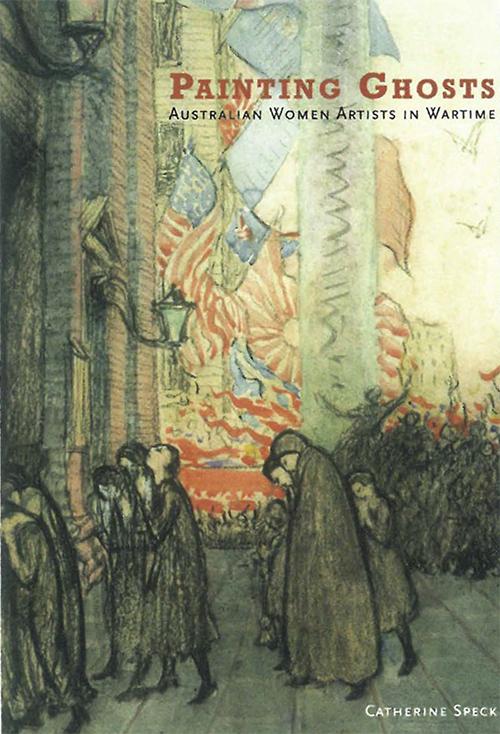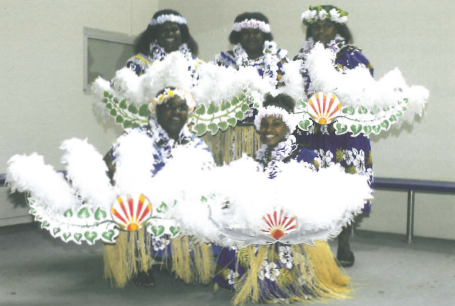
Of all nations and places the Pacific has the hardest time sidestepping its stereotypes. Swaying palms, grass skirts, crystal clear lagoons. The reality of the Pacific today is plastic waste, tourists and rising sea levels. Thirty years ago, when Melanesian nations (like PNG) were becoming independent of the old colonial form of influence, there was still a healthy strand of scholarship pursued by more or less intrepid species of Euro-American anthro who lived with peoples who still followed tradition, despite over 100 years of Christian missions. Funerary cycles resulted in intricate fish-bird-human carvings being left to rot away in the bush in New Ireland, in honour of the ancestors. The ancient cycle occurred at around the same interval as the Festival of Pacific Island Arts, whose most recent edition was staged in Palau in 2004. With the next one in 2008 seeming like aeons away (who knows how many islands in Micronesia will have started evacuating their populations to Queensland by then) there was an urge amongst aficionados of Pacific cultures in that well-known Pacific city, Brisbane, to see what they could do. And QPACifika was born.
It is not as easy today for non-Indigenous people to go and live in a Sepik or Solomons village as it used to be under colonial rule. And then there is the small factor of westernisation. Since the TV series Tribe with the flaccid Brit-lad-presenter being initiated into one 'primitive' culture after another around the world and ingesting far too many substances, the feeling that traditional cultures are to be preserved for our amusement is forever nailed by the knowledge that a few metres away is the crew in the 4WD. And beyond the frame & the store and canned fish to replace the empty rivers.
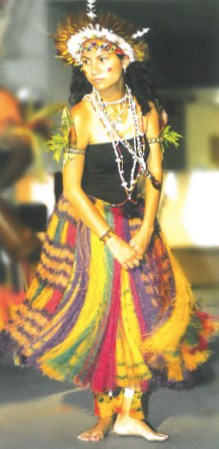
In Brisbane and other Queensland cities there are communities from a number of Pacific cultures, and QPACifika set out to bring them together. Immigrants, first generation and descendants, from Melanesia – Papua New Guinea, the Solomons, Vanuatu, from Polynesia – Tonga and Samoa and from the Torres Strait, performed for a large invited gathering of art world types and scholars of Pacific cultures, and joined in a Pacific feast the like of which has never before graced the mundane precincts of a college of art.
The integrity of this event was embodied in the buzz in the air, the sense that the groups are strongly based in their communities and meet regularly to practice and perform. Theirs is not a tourism-driven enterprise nor is it set in aspic. Indigenous Australia was there with the opening address by Murri elder Joan Hendriks and virtuoso digeridoo player William Barton setting the scene, as well as visual art by Jennifer Herd. In fact, as underscored in the brief talk by artist/scholar Michael Mel from New Guinea, who stressed the need to refocus and see the common values we hold as members the Pacific region, the continuity of Indigenous Pacific with Indigenous Australian cultures was one of the premises which framed this inaugural event.
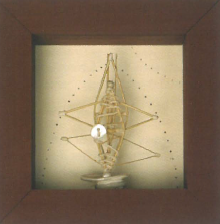
Developing a new focus to suit the times we live in is just one of the aims of the host body QPACifika, a new collaborative venture initiated by Griffith University through the inspiration of Professor Pat Hoffie who with her colleagues at the Queensland College of Art brought on board the Queensland Performing Arts Centre and the Queensland Museum.[1] It aims to conduct research to celebrate the cultures of the Pacific and to stage a series of exhibitions and performing arts events which will build towards the 150th anniversary of the State of Queensland in 2009.
Feast to Feast was a free-wheeling affair, held under the generous concrete apron of the college, as a sudden violent thunderstorm demolished the rig set up on the gentler lawn area overlooking Southbank. Plastic chairs and tables were shunted around to accommodate the epic program of eight different performing groups, several talks and two exhibitions. There were no tickets and no formality other than that conferred by the dignified presence of the large groups of performers. Anthony Newcastle was a relaxed MC who topped and tailed each item, offering the microphone to the performers in mini-interview style. This was a live substitute for what, acculturated as I am to program notes and background, I felt I needed to know. In the washup much was left unsaid but the general gist was clear. Each of the traditional performing groups – whether it was the wonderfully head-dressed Malu Kiai Mura Buai with its origins in Boigu Island in the Torres Strait, the similarly elaborately costumed Ume Lato Nama from the Central Province of Port Moresby in PNG, the women with heavy dyed grass skirts, the men in huge swaying feathered head-dresses, or the Tongan Wesleyan Choir adorned with flowered leis, mother-of-pearl fans and sarongs of fake tapa cloth – were a mixture of first, second and, in the case of the child performers, third generation islanders, who have maintained versions of the ancient dance, song, drumming and costuming of their islands, altered as these art forms have been by 150 years of adaptation and the effects of Christian missions.
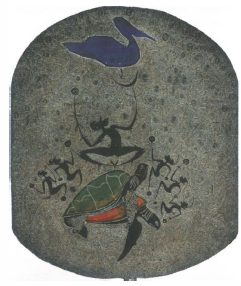
Equally exciting were several hybrid forms. Miz is a couple of accomplished rap singer/dancers. Polytoxic are three Brisbane dancers, Ioanne Efeso Sidney Fa'anana ('Fez' for short) Lisa Fa'alafi (Samoan background) and Leah Shelton who have evolved a funny, clever and highly expressive choreography together with their own sampled soundtrack which entranced the audience. Crossroads from Mackay are a self-taught and prodigiously talented new duo, Maseng Enoch from Vanuatu and Andrew Satini from the Solomon Islands, who told the story of Kanak blackbirding with the aid of a few props and some very primitive lighting. There was more. The program went for five and a half hours. And in the middle there was a lavish island-style feast with coconut, taro, lots of pig and banana leaves. An absence of the main Pacific staple, fish, but this is 21st Century Australia and the bounty of our seas is no longer a given.
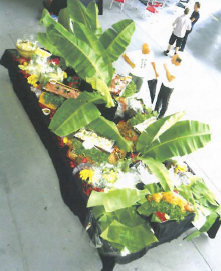
The visual art component was lively, with its well-researched catalogue essay by Pat Hoffie. It featured groups of works by eight artists, Natalie Masters, Sophia Tekela-Smith, Jennifer Herd, Samuel Tupou, Chantal Fraser, Lonnie Hutchinson, Charles Street and Dennis Nona, some of whom were there and spoke to the guests about the work. The subtitle of this QPACifika exhibition 'On the importance of being present' sums up what this brave new enterprise aspires to do. The institutions which are working together to push forward towards a fuller appreciation of Pacific cultural values, in which ephemeral and repeatable forms rather than physical objects are the embodied treasures, may have a chance to change Australian attitudes towards more sustainable ways of making art.
Footnotes
- ^ In consultation with representatives of the University of Queensland and Queensland University of Technology




